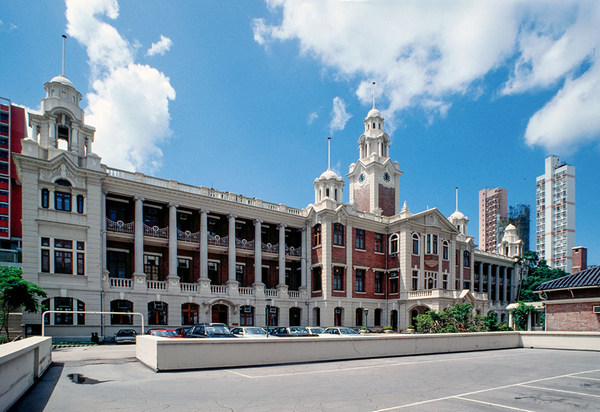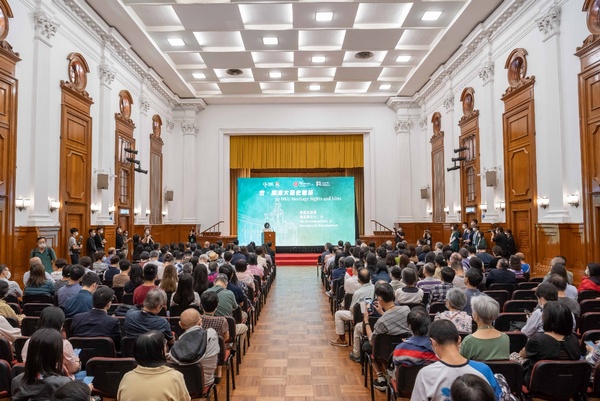The University of Hong Kong(The Exterior of the Main Building)
The Main Building, completed in 1912, is the oldest building in The University of Hong Kong (HKU). The Great Hall in the building was used as an important venue for academic and social events of the university. On 20 February 1923, Dr Sun Yat-sen gave a public speech in the Great Hall and spoke of the origin of his revolutionary ideas: “Hongkong [Hong Kong] and its university [The University of Hong Kong] are my intellectual birthplace...”. In the occasion, he answered the question “Where and how did I get my revolutionary and modern ideas?”, which had been put to him many times: “That is the answer to the question… It is entirely from Hong Kong.” Thus, we see that Dr Sun considered Hong Kong and the Hong Kong College of Medicine for Chinese, the predecessor of HKU, the source of his knowledge and thoughts.
After the fall of Guangzhou during the Japanese Invasion, Lingnan University was left without a campus. HKU stepped in and allowed Lingnan University to use part of its campus, including the Main Building and the laboratories, to conduct lessons daily starting from 2:30 p.m. After the Fall of Hong Kong in 1941, academic institutions in the Mainland repaid the kindness of HKU. Shantung Christian University (Cheeloo), which had relocated to Chengdu at the time, took in HKU medical students who had fled to Sichuan. Theyincluded Gerald Choa, a former Professor of Medicine in the Faculty of Medicine of HKU, Director of Medical and Health Services of the Hong Kong government, and Founding Dean of the Faculty of Medicine of The Chinese University of Hong Kong.
In 1956, the Great Hall was renamed Loke Yew Hall in honour of Dr Loke Yew, an early benefactor of the university. Of Jiangmen, Guangdong origin, Loke Yew was a reputable merchant and Chinese leader in Malaya. In 1915, he made a 25-year interest-free loan of 500,000 Hong Kong dollars to HKU, which was crucial for the early development of the university.
In addition, Loke Yew established the Loke Yew Scholarships at HKU to sponsor Malay Chinese students attending the university. Many Malay Chinese were drawn to the university, including students whose families originated from Guangdong. This shows that Hong Kong was not only a gateway for emigration in the early days, with education, it was also an important platform that appealed to overseas Chinese returning to their home country.
All visitors to HKU campus should make an online reservation to visit the campus up to 14 days in advance.No registration is needed for entry on public holidays in Hong Kong, Saturdays, Sundays, or weekdays before 8am or after 6:30pm.
For updated information on tourist flow management and to make reservations, please visit HKU’s website:https://www.hku.hk/visitors/visiting-hku.html
General Enquiry: (852) 3917 2882
The University of Hong Kong,Pok Fu Lam Road, Hong Kong.

Main Building, The University of Hong Kong, 1995.©Antiquities and Monuments Office

Loke Yew Hall in Main Building, The University of Hong Kong, 2022.©Antiquities and Monuments Office

Bronze statue of Loke Yew in Main Building, The University of Hong Kong, 1995.©Antiquities and Monuments Office

Main Building, The University of Hong Kong, 1912–1919.©Hong Kong Museum of History
-
扫一扫在手机打开当前页










